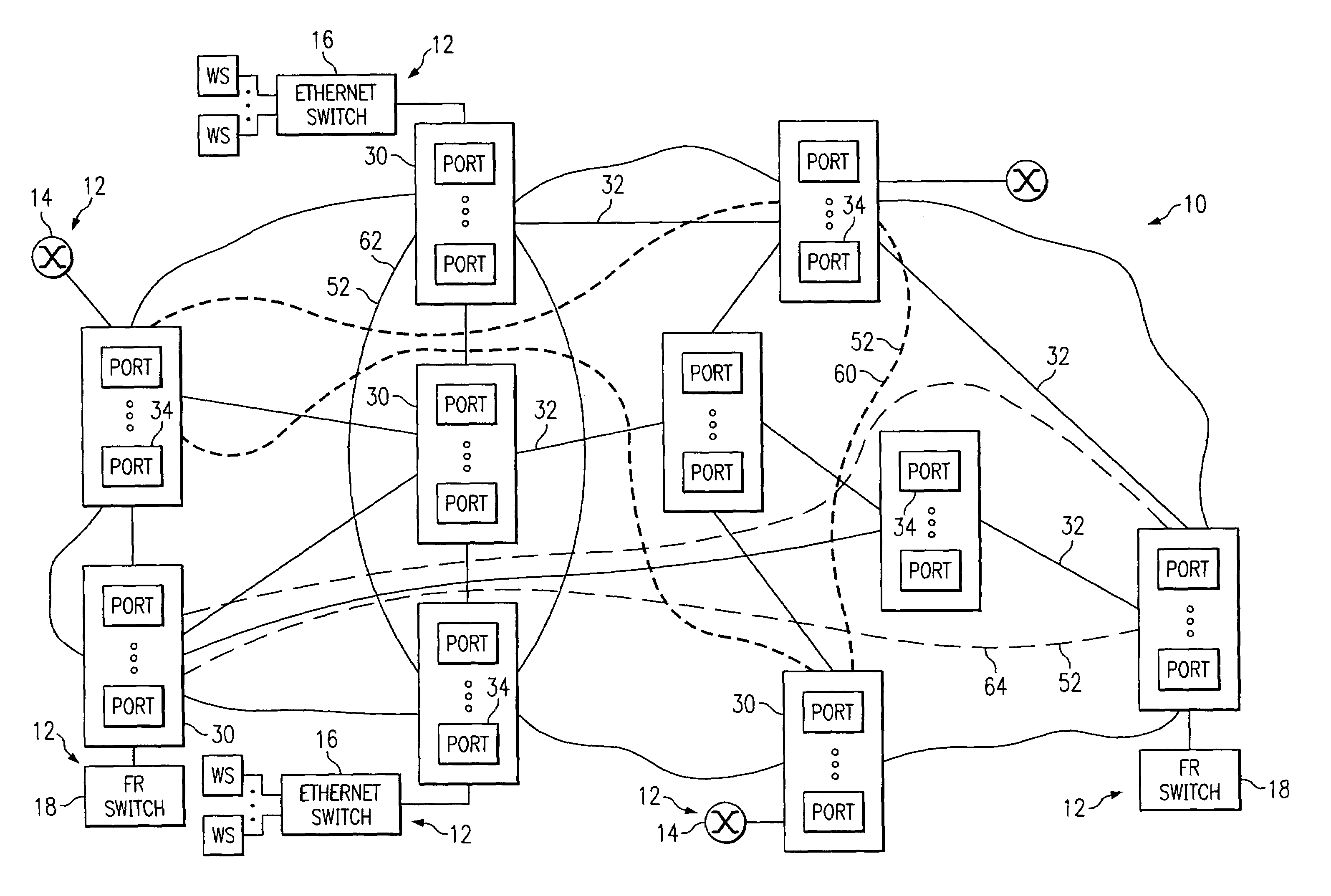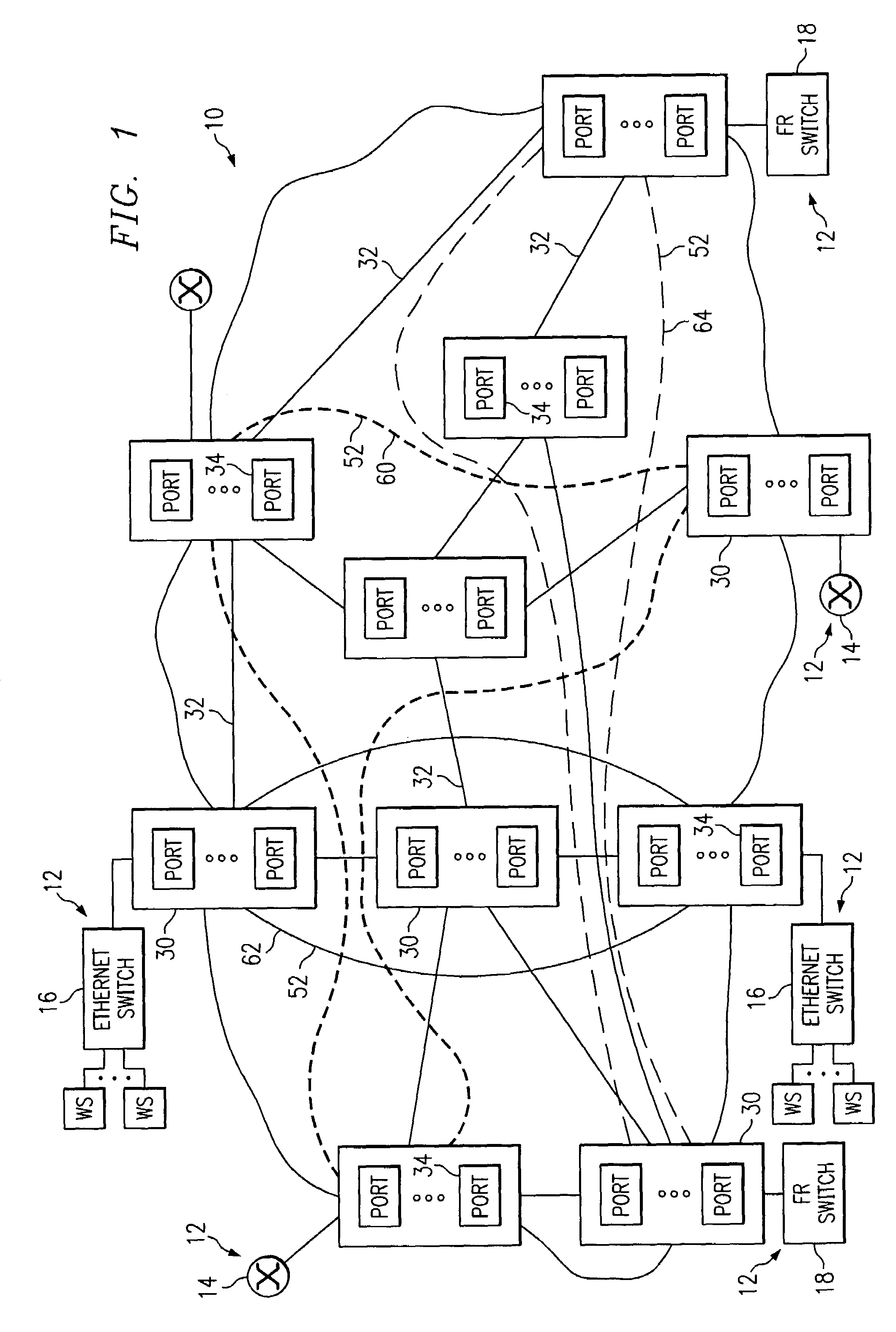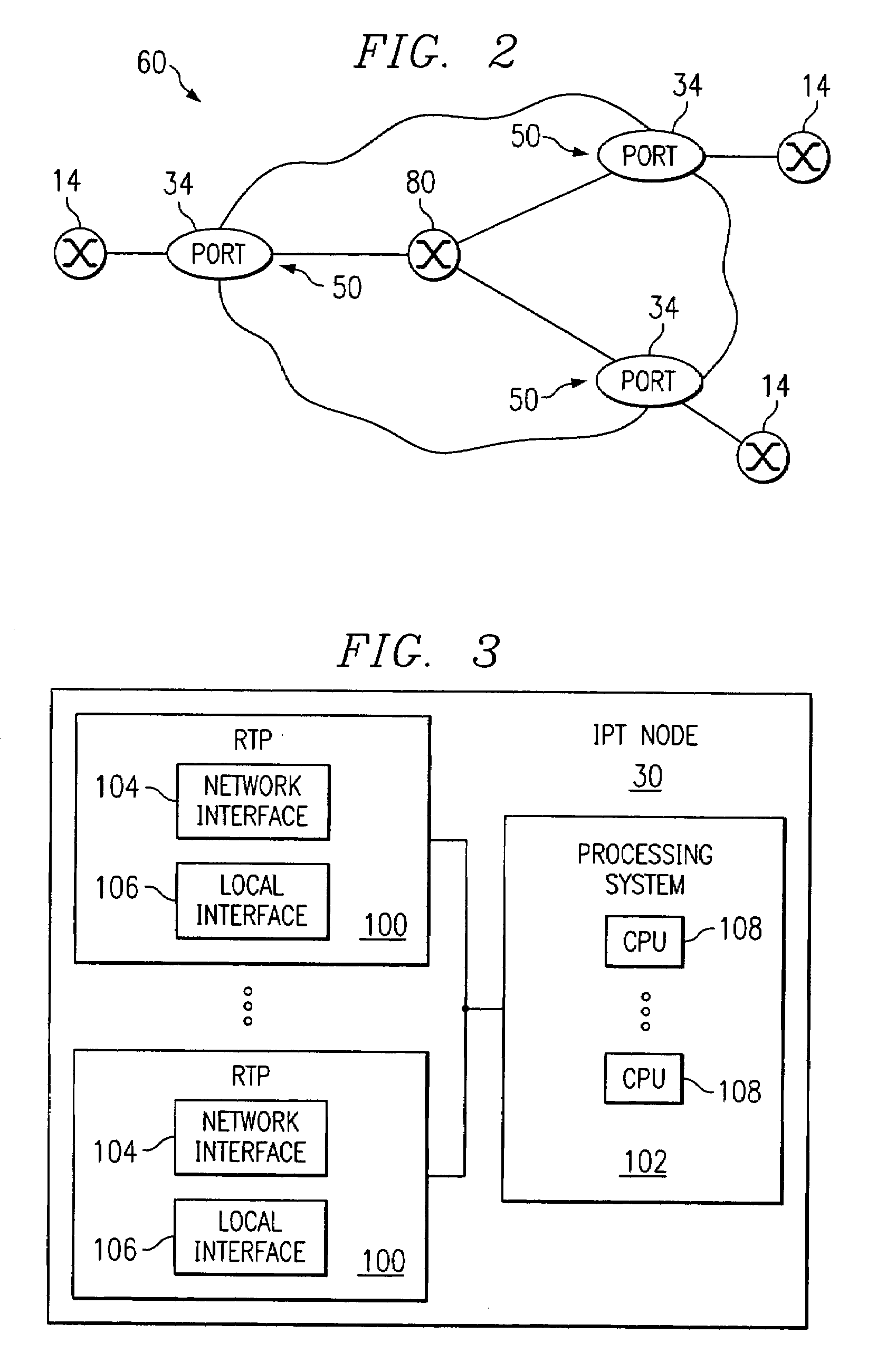Transport network and method
a transport network and transport element technology, applied in the field of telecommunication networks, can solve the problems of increasing the cost of support and equipment both in the network and in the subtending network elements, and the physical port of the ip network is required to achieve channelization, the effect of improving the external representation and reducing the amount of physical port channelization
- Summary
- Abstract
- Description
- Claims
- Application Information
AI Technical Summary
Benefits of technology
Problems solved by technology
Method used
Image
Examples
Embodiment Construction
[0033]FIG. 1 illustrates a transport network 10 in accordance with one embodiment of the present invention. In this embodiment, the transport network 10 is an Internet protocol (IP) network for transporting IP and Multiple Protocol Label Switch (MPLS) packets. The transport network 10 may be any other packet-switched network operable to route, switch, and / or otherwise direct data packets based on network protocol addresses.
[0034]The transport network 10 is a private network connecting geographically distributed segments of an external network 12. The external network 12 includes one or more public and / or private networks such as the Internet, an intranet, and other suitable local area networks (LAN), wide area networks (WAN), and nodes. The external network 12 includes label switch and subtending routers 14, Ethernet switches 16, Frame Relay switches 18 and other suitable routers, switches, and nodes operable to generate and / or transport traffic. The transport network 10 communicate...
PUM
 Login to View More
Login to View More Abstract
Description
Claims
Application Information
 Login to View More
Login to View More - R&D
- Intellectual Property
- Life Sciences
- Materials
- Tech Scout
- Unparalleled Data Quality
- Higher Quality Content
- 60% Fewer Hallucinations
Browse by: Latest US Patents, China's latest patents, Technical Efficacy Thesaurus, Application Domain, Technology Topic, Popular Technical Reports.
© 2025 PatSnap. All rights reserved.Legal|Privacy policy|Modern Slavery Act Transparency Statement|Sitemap|About US| Contact US: help@patsnap.com



